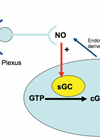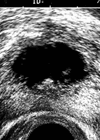Features archive for 2014
Erectile dysfunction part II: treatment
Introduction The identification of specific risk factors associated with erectile dysfunction (ED) allows patients with mild or moderate ED to undergo a series of lifestyle changes, which may provide enough improvement in the erectile function to avoid pharmacotherapies. Cessation of...
Nocturia – the Cinderella of lower urinary tract symptoms
Nocturia is defined as waking during the night (at least once) to urinate. The important part of the definition relates to the necessity of sleep to precede the episode (although whether sleep must follow the episode is less clear). The...
Metastatic spinal cord compression – a review
Introduction Metastatic spinal cord compression (MSCC) is an oncological emergency that, unless diagnosed early and treated appropriately, can lead to significant morbidity and mortality, including paralysis and bladder and bowel dysfunction. MSCC can be defined as spinal cord or cauda...
The role of transperineal template biopsies in the diagnosis of prostate cancer
The case In 2002, Mr A, a 64-year-old software engineer, was referred by his GP for further investigation of a raised prostate specific antigen (PSA) of 6.2. His prostate felt benign. He underwent transrectal ultrasound guided (TRUS) prostate biopsies. This...
Erectile Dysfunction Part I: pathophysiology and risk factors
Introduction Erectile dysfunction (ED) is defined as the inability to achieve and maintain a penile erection, which is adequate for satisfactory sexual intercourse. The Massachusetts Male Ageing Study (MMAS) reported the results of a regional survey of men aged 40–69...
Inpatient care of patients with established spinal cord injury - what a general urologist needs to know
Introduction Spinal cord injury (SCI) is a devastating, life-changing condition, which is currently irreversible. Depending on the level of the spinal cord affected (and whether the lesion is complete or incomplete), patients may subsequently develop reduced voluntary motor function, sensory...
Lasers in benign prostatic hyperplasia
Clinical benign prostatic hyperplasia (BPH) impacts on the quality of life of many men. It is intimately related to ageing, but exact calculations of its prevalence remain difficult since an accurate clinical definition still eludes us. Histological BPH has been...
Endoscopic management of upper tract urothelial carcinoma
Upper tract urothelial carcinoma (UTUC) is a rare disease accounting for 5-10% of all urothelial carcinomas and has an annual incidence in Western countries of 1-2 per 100,000 [1,2]. It occurs more commonly in the pelvicalyceal system as opposed to...
Molecular biology – bladder cancer
Background Bladder cancer is the most common cancer of the urinary tract and approximately 90% of bladder cancers diagnosed in North America and Europe are transitional cell carcinomas (TCC). For the purposes of diagnosis and treatment, bladder cancer is often...










